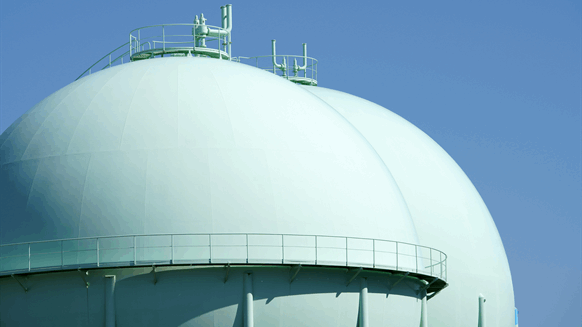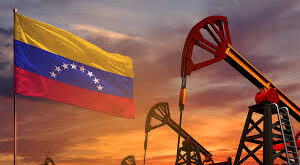Even if supply from Russia via Ukraine ends, the European Union can still meet its natural gas needs in next year’s winter by utilizing the bloc’s storage facilities and rolling back consumption before the peak season, according to a new industry analysis.
The transit contract between the two warring countries ends December, leaving the Turkstream across the Black Sea to Türkiye the only pipeline route for Russian gas to reach the EU. The purportedly sabotaged Nord Stream, which links Russia and Germany, has been idle since 2022.
However, current levels of underground storage (UGS) facilities across the EU and the addition of new gas infrastructure including liquefied natural gas (LNG) terminals give the region a fallback in the case of pipeline supply from Russia being cut off, the European Network for Transmission System Operators for Gas (ENTSOG) said in an outlook report.
The 27-member bloc reached its storage target for 2024 about 10 weeks ahead of the deadline, according to the online gas storage monitoring database of industry association Gas Infrastructure Europe (GIE). Last year the EU also achieved its minimum required storage level over two months ahead of schedule.
In June 2022, the EU passed a regulation mandating the region’s gas storage facilities be filled to at least 90 percent of capacity by November 1 each year. This was in response to surges in energy prices that followed Russia’s invasion of Ukraine.
“On 1 October 2024, the EU’s UGS reached 94 percent on average which translates to 1,083 TWh [terawatt hours]”, ENTSOG said in the report on its website. “The high storage filling level (59 percent) at the beginning of the injection period, lower gas consumption over the years and dedicated measures introduced by the Member States contributed to a high volume of gas in storage at the beginning of the winter period.
“The gas infrastructure, including the projects that have been commissioned during this year and the expansions to be commissioned over the upcoming winter, are boosting energy security in the EU and allow for a more efficient cooperation among the EU Member States”.
For the next winter, even in the case of limited LNG availability, the EU can prepare for the loss of pipeline gas from Russia by keeping at least a 30 percent storage level at the end of the current winter season. This would allow the EU to use the 2025 summer to adequately restock for the winter that follows, according to ENTSOG.
“In the high demand cases (i.e.,2-week cold spell and peak day demand in the Reference Winter scenario) no EU Member State is exposed to the risk of demand curtailment”, it added.
However, “[i]n case of full disruption of Russian pipeline supplies during winter [October 2025 to March 2025, or the reference winter demand], additional measures might be needed to save adequate volumes of gas for the end of the season, and to avoid risk of demand curtailment in case of Cold Winter and peak demand situations”, ENTSOG said.
“Simulation results showed that the introduction of possible measures, such as additional supplies, and a 15 percent decrease in gas demand, would avoid demand curtailment risks and allow for reaching an adequate storage level without any pipeline supplies from Russia.
“Even in case of a full Russian pipeline supply disruption, cooperation between the countries and demand measures could allow for a more efficient injection during the summer 2025 in preparation for the next winter.
“To achieve the 90 percent UGS stock level target by the end of summer 2025, it is necessary to maintain gas at the beginning of the injection season (between 30 and 40 percent) depending on the availability of LNG.
“In the Low LNG supply scenarios, some demand response may be necessary to reach the 90 percent target.
“EU UGS stock levels are considerably high on 1 October 2024 (94 percent). Additional UGS flexibility could be secured by storing additional volumes in Ukrainian UGS under the condition that this gas can be injected and later on withdrawn during the winter season and market participants would be willing to use it”.
The European Commission said that the assessment “confirmed the EU is well prepared for winter 2024-2025 and the following summer months”.
“Looking ahead to next summer, the report confirms the need to continue to prepare for subsequent winters by, for example, storing gas throughout the summer months and reducing gas demand”, it said in a statement on its website. “The EU continues to exceed its target of 90 percent gas storage filled across the EU by 1 November and 15 percent reduction in gas demand, reaching 18 percent last winter.
“The report demonstrates the independence of the EU gas system from Russian pipeline supply and underlines the significant progress of the EU to phase out Russian fossil fuel imports in line with REPowerEU”.
An analysis published Friday by economic think tank Bruegel was in consensus with ENTSOG’s outlook, saying the EU’s gas infrastructure buildout can answer for about 140 TWh of gas that the EU would need to replace after the end of the Russia-Ukraine transit agreement.
“First, LNG terminals in Poland, Germany, Lithuania, Italy, Croatia and Greece, new floating storage regasification units in Germany and Italy and the potential expansion of the capacity of the Turkstream pipeline that runs across the Black Sea from Russia to Türkiye could replace the lost volume”, Bruegel said.
“Second, there is enough infrastructure for transmission system operators to transport replacement gas to Austria, Hungary, and Slovakia. For example, Czechia claims it has sufficient gas network capacity to support other countries and mitigate potential disruptions if gas flows via Ukraine cease.
“Third, storage capacity is at time of writing 95 percent full ahead of winter. Austria has enough gas stored to cover its entire domestic gas demand. Additionally, Germany’s decision to not charge a high gas storage fee on transits would help avoid a significant rise in regional gas prices in the event of a complete cutoff of Russian gas”.
In the first eight months of 2024 the Ukraine route accounted for five percent, or 112 TWh, of EU gas imports from Russia, according to Bruegel.

 Iran Energy News Oil, Gas, Petrochemical and Energy Field Specialized Channel
Iran Energy News Oil, Gas, Petrochemical and Energy Field Specialized Channel



